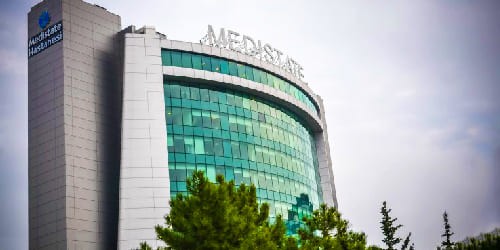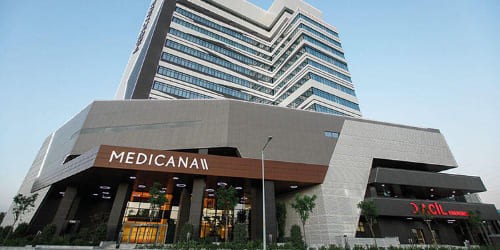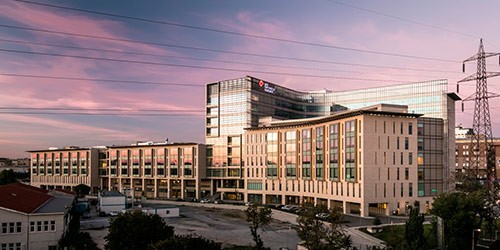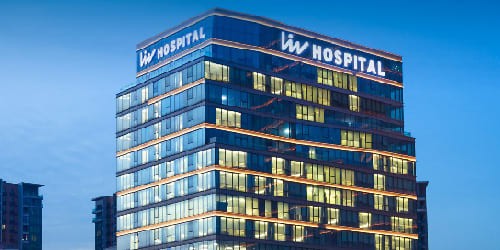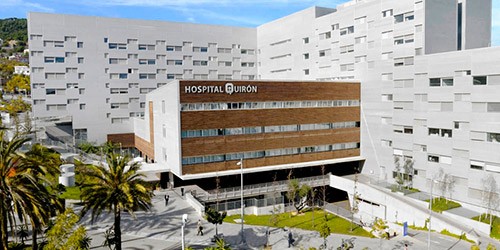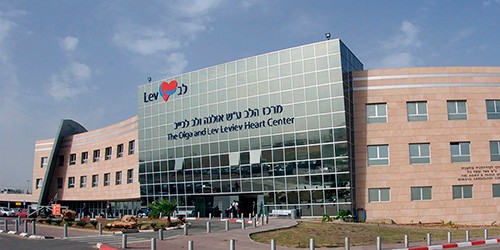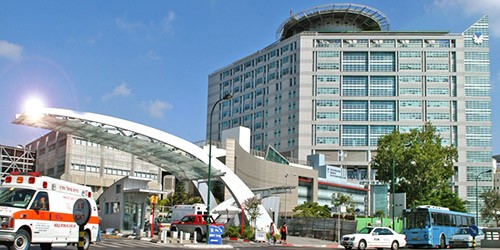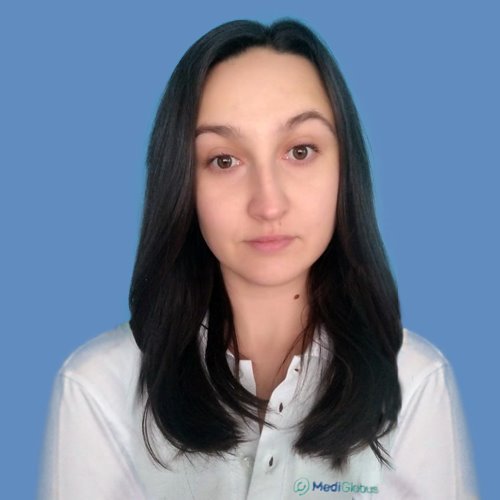1. Anaplastic large cell lymphoma |
2. Symptoms of the disease |
3. Diagnostics |
4. Treatment |
5. Prognosis |
6. Leading Hospitals |
7. Top oncology specialists |
Large cell anaplastic lymphoma is an aggressive and rare cancer that affects lymph nodes and non-nodal sites. It is most commonly diagnosed in children and young adults, predominantly of the male sex. It is a T-cell non-Hodgkin’s lymphoma and it accounts for about 10% of all lymphomas. Polychemotherapy is the first line of treatment for the disease, with a response rate of approximately 90%. Read more about anaplastic lymphoma, symptoms, treatment options and survival prognosis in our article.
Listen to the article:
What is anaplastic large-cell lymphoma?
Anaplastic large cell lymphoma (ALK) is a cancer of the human lymphatic system. It is a type of T-cell non-Hodgkin lymphoma. The disease is most commonly diagnosed in adolescents and young adults, and between the ages of 60 and 70. It mainly affects males.
The T cells are the main ‘defenders’ of the immune system. They fight bacteria, viruses and other ‘enemies’ of the body, as well as destroy the body’s diseased cells. A cancer process in T cells undermines a person’s immune system and reduces their ability to fight off infections.
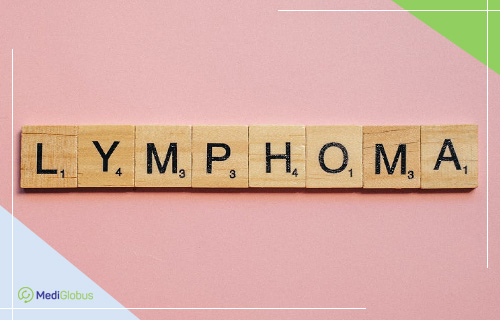
Anaplastic large-cell lymphoma belongs to the group of CD30-positive lymphoproliferative pathologies. According to the classification of the World Health Organization, the disease is divided into 3 subtypes: positive anaplastic large cell lymphoma (ALK+), negative anaplastic lymphoma (ALK-) and large cell anaplastic lymphoma associated with breast implants.
The first variant is more common in children and young adults, the second in people over 40, and the third in women who have had a mammoplasty. All forms of lymphoma differ clinically and prognostically.
The positive form of ALK differs from the negative form in the presence of chromosomal gene rearrangements in 2P23. These tumours have a better prognosis than other forms of large-cell anaplastic lymphoma. ALK associated with breast implants is a slowly progressive oncopathology. It occurs very rarely, in 2-4% of cases. The appearance of the disease can be triggered by an inflammatory reaction to the implant.
Symptoms of anaplastic large cell lymphoma
A common feature of all subtypes of anaplastic lymphoma is enlarged and painful lymph nodes. The lymph nodes in the neck and axilla are particularly affected. Patients also have a loss of appetite, fever, cough and shortness of breath. They complain of increased fatigue, itchy skin, weight loss and night sweats.
ALK can metastasise to other organs and body systems. Those most commonly occur in:
Bones,
Bone marrow,
Subcutaneous fatty tissue,
Gastrointestinal tract,
Lungs,
Spleen,
Soft tissue,
Liver.
The main differences in the clinical picture between ALK-negative and ALK-positive lymphomas are the areas in which the disease has metastasised. The first group is characterised by the spread of the malignant process to the skin, liver and gastrointestinal tract, while the second group spreads to the bone, soft tissue, spleen and bone marrow. Negative lymphomas metastasise more often than positive lymphomas.
What methods are used to diagnose anaplastic lymphoma?
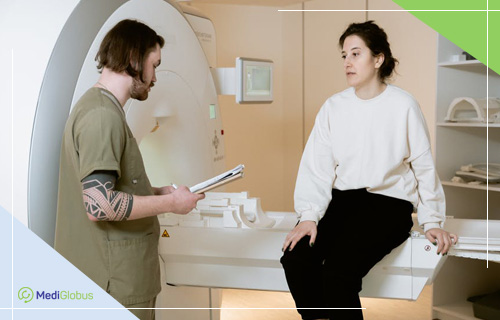
Most cases of anaplastic large cell lymphoma are detected at stage 3 or 4. This is because the disease may not show itself for a long time or may appear similar to other illnesses. For example, enlarged lymph nodes in the neck, cough and weakness may be mistaken for signs of a common cold. A good and thorough diagnosis is therefore essential for the right cancer therapy and the success of the treatment.
The diagnosis of ALK includes a physical examination, haematological and biochemical tests and a whole-body CT or PET-CT. Patients with brain metastases and neurological symptoms are prescribed MRI, CT scan and cytological examination of the cerebrospinal fluid. If lymphoma has affected the breast, soft tissue, or salivary glands, ultrasonography is performed.
X-rays and, if possible, biopsies are taken if the disease has spread to the bone. In patients with gastrointestinal involvement, endoscopic examination is recommended. A biopsy followed by a microscopic examination of lymphoid tissue or bone marrow samples can provide definitive confirmation of the diagnosis.
To make an appointment for a lymphoma diagnosis abroad, please contact the coordinating doctors at MediGlobus. Our specialists will find a suitable clinic for you.
How is anaplastic large-cell lymphoma treated abroad?
The first line of treatment for anaplastic large cell lymphoma is polychemotherapy – treating patients with a combination of chemotherapy drugs. CHOP or MACOP-B regimens are prescribed for adult patients with this disease.
ТCHOP is a protocol consisting of four antitumour drugs. These include Cyclophosphamide, Doxorubicin, Oncovin and Prednisone. They are administered at 2-3 week intervals. Six to eight cycles of chemotherapy are needed to achieve the maximum therapeutic effect.
MACOP-B is a chemo protocol consisting of six drugs. These include Methotrexate, Doxorubicin, Cyclophosphamide, Vincristine, Prednisone and Bleomycin. Approximately 6 cycles of chemotherapy are needed to achieve the best therapeutic results.
Children and young people with anaplastic lymphoma are usually treated according to lymphoblastic leukaemia protocols. It involves 3 stages in the fight against the disease.
Patients initially receive induction chemotherapy for 4-8 weeks. This is to reduce the number of cancer cells as much as possible and achieve remission. This is followed by consolidation chemotherapy with several drugs. The final stage lasts from a few weeks to 2 years. During this period, the patient is given high doses of chemo.
For large-cell anaplastic lymphoma, radiotherapy, targeted therapy or immunotherapy may also be used. Bone marrow transplantation is recommended in advanced cases or frequent relapses. The success rate of BMT abroad is over 92%.

Leading specialists in treating anaplastic lymphoma abroad
Professor Yener Koç
Turkey’s top specialist in the treatment of blood and lymphatic cancer in adults. The doctor practices at the Medicana Clinic in Istanbul. He is the founder of the Bone Marrow Transplant Centre. About 2,000 BMTs have been performed under his leadership. His experience exceeds 38 years.
Professor Betül Tavil
A renowned Turkish blood cancer specialist with 24 years of experience. She sees patients at Medistate and Memorial Ataşehir clinics. Dr Betül Tavil deals with the medical treatment of leukaemia, Hodgkins and non-Hodgkin’s lymphoma, haemophilia as well as thalassaemia in children.
Professor José Rifón Roca
Spain’s leading specialist in haematology and oncohaematology. The doctor practises at the Uniclinic of Navarra. He is the Head of the Bone Marrow Transplant Unit. He has over 25 years of experience.
Professor Arnon Nagler
Top onco-haematologist at Israel’s Chaim Sheba Hospital. The doctor deals with the medical treatment of leukaemia and lymphoma. He runs the Institute of Onco-Hematology, where he performs bone marrow transplants.
To book an appointment with one of the best anaplastic lymphoma specialists abroad, please leave a request on our website. We will help you in selecting a doctor and arrange a face-to-face or remote consultation with him or her in the shortest possible time.
The prognosis for treatment of anaplastic large cell lymphoma
The prognosis for anaplastic lymphoma varies according to the type of oncopathology, the spread of the malignant process, response to treatment, age and health status of the patient. The overall 5-year survival rate for ALK-positive patients is 70-86%, while for the negative form of oncopathology it is only 30-49%.
Where is the treatment for anaplastic lymphoma available abroad?
Summary
Anaplastic large-cell lymphoma is a malignant disease of the lymphatic system. Its main symptoms are enlarged and painful lymph nodes. Patients also experience increased fatigue, loss of appetite, weight loss, fever, night sweats, coughing and shortness of breath.
Combination chemotherapy is considered the first-line treatment for anaplastic lymphoma. Patients are also treated with radiation, targeted drugs or immunotherapy. In severe cases, bone marrow transplantation is indicated.
The overall 5-year survival rate for ALK-positive patients is 70-86%, while the rate for ALK-negative cases is only 30-49%.
Leading anaplastic lymphoma specialists abroad are practising in Turkish, Spanish and Israeli medical centres. Notable among them are Betül Tavil, Yener Koç, José Rifón Roca and Arnon Nagler.
For diagnosis and oncological treatment of the disease, patients most often go to the following clinics: Koç, Medistate, Medicana, Liv, Teknon, Sheba, Ichilov and the University Hospital of Navarra.
To book your ALK treatment abroad, click on the button below and fill in the feedback form. Our coordinators will call you back to help you with all your medical travel needs.




